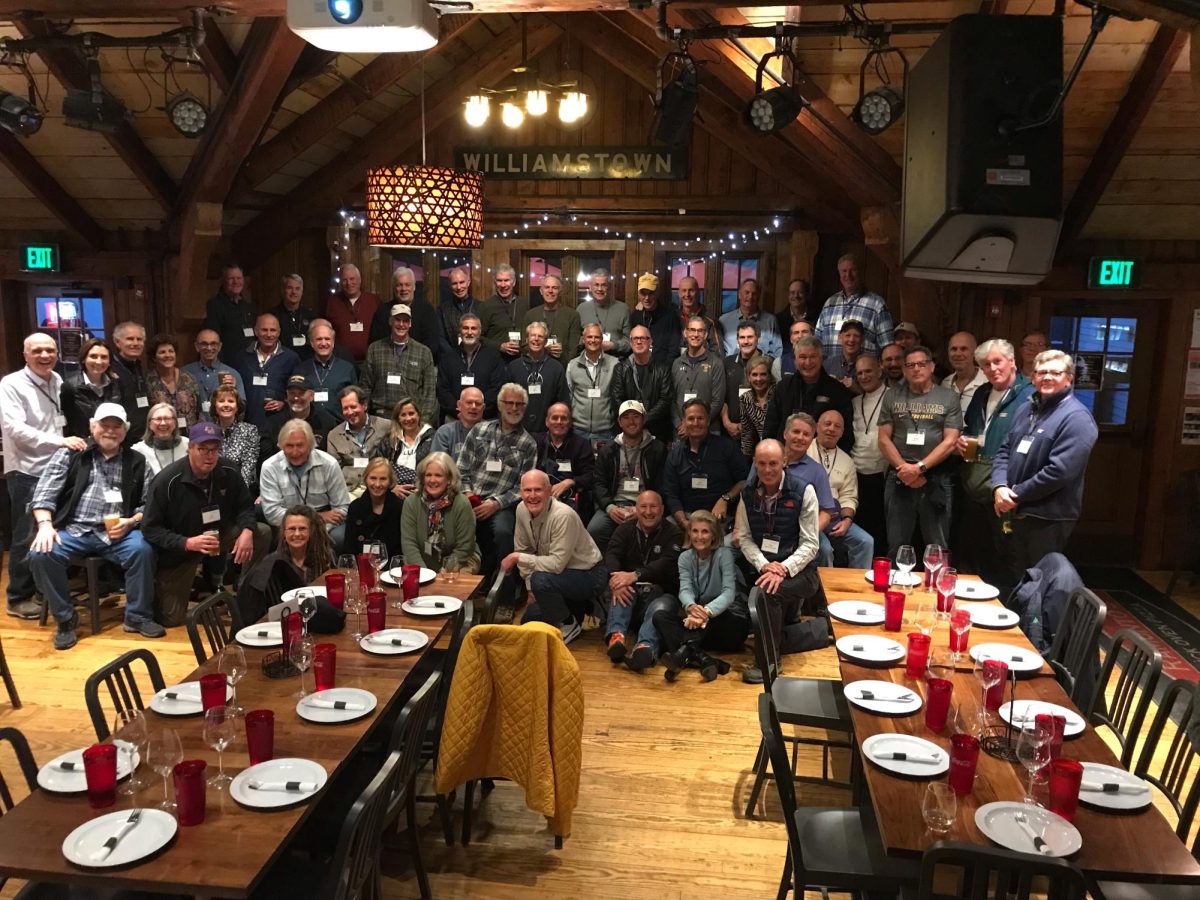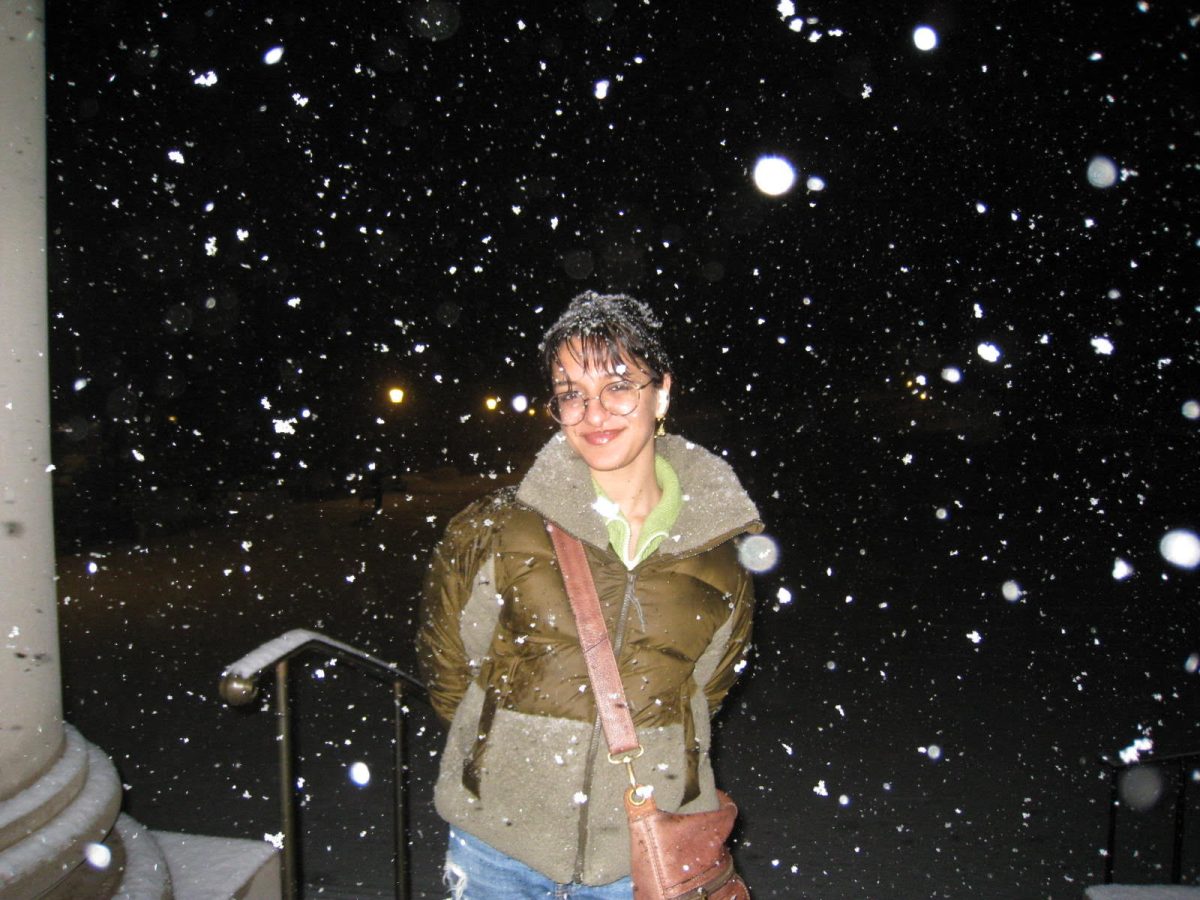Baltimore is unlike most major cities in the U.S. in that it is facing an unprecedented, and rising, level of violent crime. In response, Baltimore has invested in surveillance technologies to prevent and reduce crimes; however, these programs can be highly controversial.
Assistant Professor of Sociology Ben Snyder is involved in assessing one of these proposed technologies: Wide Area Motion Imagery (WAMI). Developed during the Iraq War to catch roadside bombers, “WAMI is a surveillance tool that uses a powerful array of cameras mounted onto a regular plane, like a Cessna,” Snyder said. “It flies around the city in a circular orbit, and it takes one photo per second, and each photo is stitched together into this moving image of the entire city.”
Law enforcement can use this technology to track a person or object in the images throughout time. The protocol starts out from a 911 call when a citizen reports a violent crime and their location. Then, analysts from Persistence Surveillance Systems (PSS) — the owners of WAMI — pull up the imagery of that area and attempt to witness the crime. If they find the perpetrator, they can then track them into and out of the crime scene, and that information will be given to the investigators on the case. This technology acts as a time machine, allowing people to be tracked both in the past and in the future.
Snyder stressed the importance of understanding that WAMI “captures crime, but it also captures the entire city, everybody walking around like little ants on the sidewalk.” This causes “massive privacy implications and [therefore] is a very controversial piece of technology,” he said. However, advocates for this system claim that the imagery is highly pixelated and, therefore, cannot be used to distinguish actual individuals.
Snyder said he agrees in that the images “look like a kind of smudgy, out-of-focus image of a city, [as] you would see if you were sitting in an airplane and looking down.” He continued, “but what the technology does is it tracks the time and movement of objects with extreme precision.” With that in mind, you could easily synchronize the movements it captures with other technologies already in place in the city, such as CCTV (closed-circuit television).
“If a person walks by six CCTV cameras, you can then see exactly what second of the day they walked past those cameras and request that imagery, stitch it all together, and you can see exactly what someone looks like,” Snyder said. “You can see the color of their skin, what their car looks like and their license plate number.”
Talk of integrating this technology into the city resulted in a division in Baltimore — an already highly segregated city — between African American and white populations. The lesser-known division, however, is within the black community itself. Many black members of the middle class and church are in favor of WAMI and PSS, Snyder said.
“The reasons boiled down to the fact that they are living in a neighborhood with a shooting every day, sometimes multiple in a day,” Snyder said. In their neighborhoods, it can be dangerous to report a crime, because of potential retribution. “If the technology could witness crimes for them, that would be a huge relief,” he said. “It could be a game-changer.”
Other black community members are against the use of this technology because of its pro-imprisonment message. For Snyder, this line of reasoning makes sense given the level of distrust and the well-known corruption in the police system.
Snyder’s research raises the issue of Fourth Amendment protections. Currently, he said, federal law does not ban WAMI or similar technologies. “[There is] pretty good reason to think that over the next decade there will be major changes in the law,” he said. “We need to reformulate by what we mean by warranted search and seizure.”
This is Snyder’s first project involving the criminal justice system. He was interested in learning about the legal apparatus that allows technologies of mass scale to explicitly work in that way have been. “It’s shocking to me and worrisome,” Snyder said. “The way technology is headed is not going in the right way… We need to be documenting exactly how these technologies are played out on the ground, not in theory, but how actual people are using and interpreting them.”
His research also stemmed from the philosophical and theoretical point of view of the data. Specifically, Snyder is analyzing whether or not there is objectivity in technology and how data-driven policing operates. “I am somewhat skeptical that data could ever provide us with the kind of truth that we hope it would,” he said.
Along with his research paper, “Big Brother’s Bigger Brother,” Snyder is writing a book on the practice of watching the watchers. Snyder said that the focus of the book will use police-watcher and court-watcher accounts to try to reform the system.
Should Baltimore make use of the spy plane? “My gut tells me it’s a bad idea, Snyder said. “But there are people in Baltimore who have such deep hope in this technology, and their point of view cannot be dismissed.”
One of his friends, a pastor, said that people who lose loved ones to gun violence often ask her whether she has news. “They ask ‘Do you know anything about my case? Has the spy plane been up at the time when my boy was killed?’ Because the police came and took pictures of the crime scene and that’s the last thing I’ve heard,” Snyder said.
Assessing whether this technology should be implemented becomes difficult. “Are you honestly going to say that we shouldn’t use this technology because it might violate my privacy or Fourth Amendment law?” Snyder asked. “That’s an insulting retort to that person’s pain. I have a really hard time weighing these things. I think it is a dilemma.”








